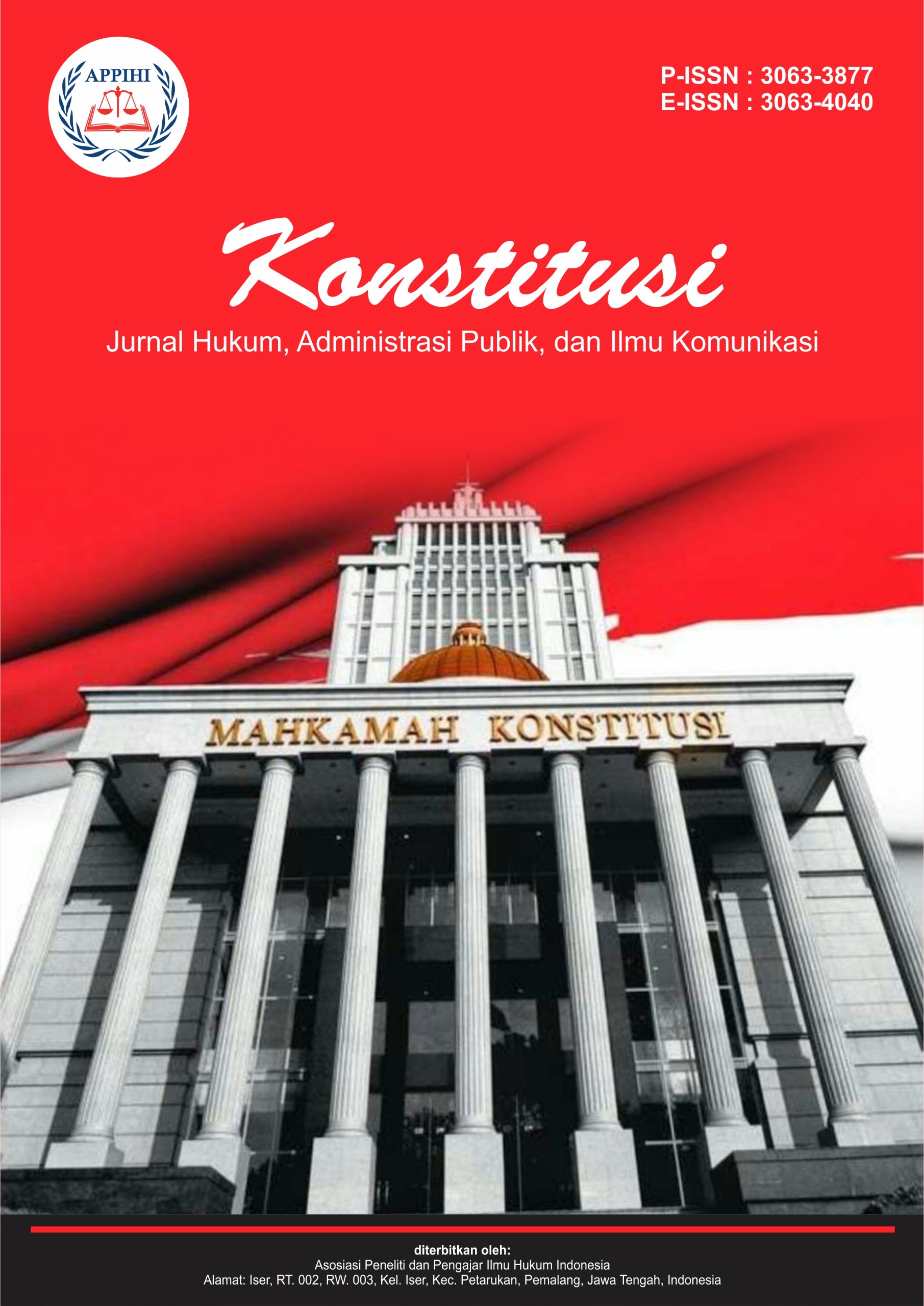Strategi Pengembangan Pelayanan Publik dalam Meningkatkan Transparansi Penyaluran Bantuan di Kabupaten Wajo
DOI:
https://doi.org/10.62383/konstitusi.v1i3.138Keywords:
Public Service Development Strategy in Increasing Transparency in Aid Distribution, Public services, aid distributionAbstract
According to Articles 33 & 34 of the 1945 Constitution Law of the Republic of Indonesia, the state is tasked with protecting the entire Indonesia nation and promoting general welfare in realizing social justice for all Indonesia people. One of the government's strategies in realizing social welfare is to distribute social assistance (Law Number 11 of 2009). Based on the Regulation of the Minister of Finance (PMK) number 181 of 2012, social assistance (bansos) is assistance in the form of transfer of money, goods, or services by the central/regional government to the community to protect the community from the possibility of social losses, increase economic capabilities, and improve social welfare. This type of research is descriptive qualitative research. This research is to identify and analyze Public Service Development Strategies in Increasing Transparency of Aid Distribution in Wajo Regency. This study uses qualitative research methods in the research design. The results of interviews with Social Service employees and the community show that the public service development strategy in Wajo Regency focuses on the use of information technology, effective socialization, and an empathetic approach. Overall, the efforts made by the Social Service have brought positive changes in the distribution of social assistance in Wajo Regency, with an increase in public trust and satisfaction with the services provided.
Downloads
References
Arikunto, S. (2016). Pengembangan Instrumen Penelitian dan Penilaian Program.Yogyakarta: Pustaka Pelajar.
Arikunto, S. (2017). Pengembangan Instrumen Penelitian dan Penilaian Program.Yogyakarta: Pustaka Pelajar.
Budio, S. 2019. Strategi Manajemen Sekolah. Jurnal Menata Volume 2, No. 2
Cohen, L., Manion, L., & Morrison K., Research methods in education, Routledge, 2013.
Creswell, John W. 2012. Desain Penelitian Pendekatan Kualitatif, Kuantitatif, dan Mixed. Yogyakarta: Pustaka Pelajar.
Creswell, John W. 2012. Research Design Pendekatan Kualitatif, Kuantitatif, dan Mixed. Yogyakarta: Pustaka Pelajar.
Donald Ary, et, all. Introduction to Research in Education, Canada: Wadsworth, thCengage Learning, 8 , Edition, p. 640
Freddy Rangkuti. (2015) Analisis SWOT. Jakarta : PT Gramedia Pustaka Utama. Harwandi, Sugiyanto, M. D. (2019). Paraga Game As Traditional Sports For
Bugis Makassar Tribal Communities In South Sulawesi , Indonesia. European Journal of Physical Education and Sport Science.
Johnson, Robert Burke and Larry B. Christensen. 2007. Educational Research: Quantitative, Qualitative, and Mixed Approaches. London: Sage Publications.
Moleong, Lexy J. (2017). Metode Penelitian Kualitatif, cetakanke-36, Bandung : PT. Remaja Rosdakarya Offset.
Patton, Michael Quinn. 2009. Metode Evaluasi Kualitatif. Yogyakarta: Pustaka Pelajar, hal. 41.
Saptutyningsih, E., &Setyaningrum, E. (2019). Penelitian kuantitatif : metode dan alatanalisis : di lengkapi dengan contoh skripsi penelitian (1st ed.). Gosyen Publishing. (p. 103)
Sugiyono. (2014). Metode Penelitian Pendidikan Pendekatan Kuantitatif,. Kualitatif, dan R&D. Bandung: Alfabeta.
Udin B. Sore dan Sobirin, 2017. Kebijakan Publik. CV. Sah Media. Makassar
Downloads
Published
How to Cite
Issue
Section
License
Copyright (c) 2024 Konstitusi : Jurnal Hukum, Administrasi Publik, dan Ilmu Komunikasi

This work is licensed under a Creative Commons Attribution-ShareAlike 4.0 International License.






